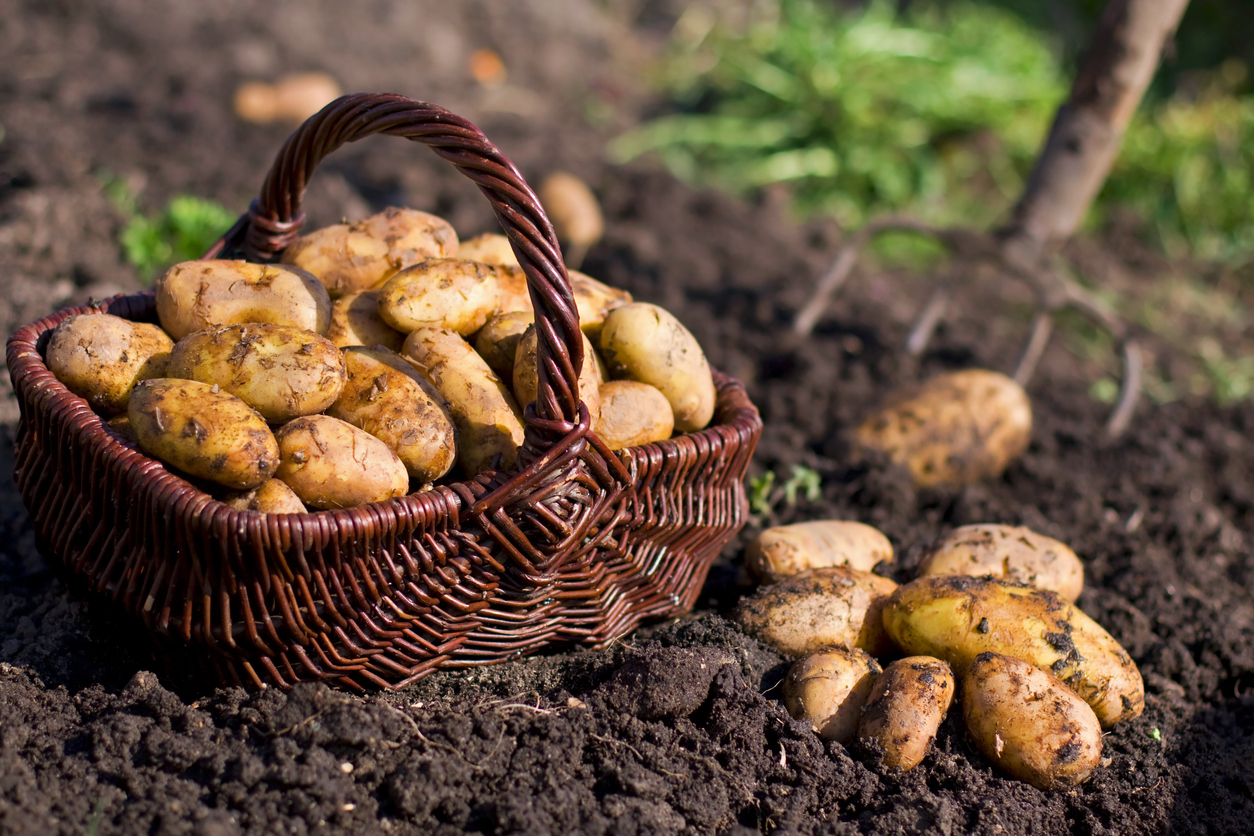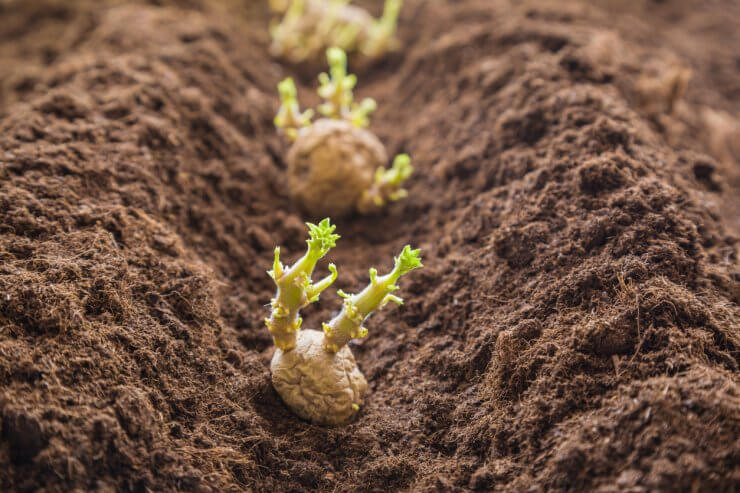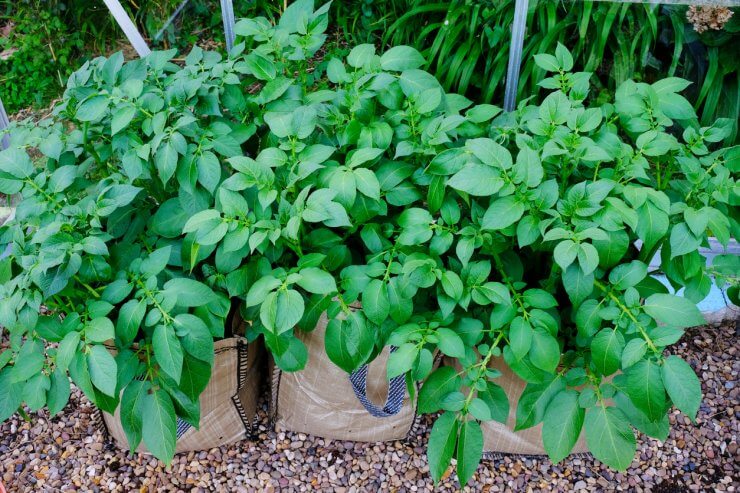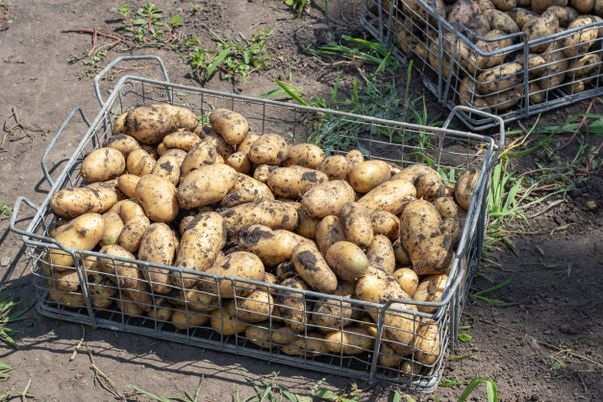
You know, after years of tending to my own potato patch, I’ve learned that even the most seasoned growers can always find ways to boost their yield. We’ve all had those seasons where we’ve pulled up a bumper crop, and others where we’ve scratched our heads wondering what went wrong. But that’s the beauty of gardening, isn’t it? There’s always room for improvement and new techniques to try.
In this article, we’re going to dig deep into the soil of potato cultivation and unearth some strategies that could take your harvest from good to great. We’ll be focusing on three key areas that I’ve found make the biggest difference: planting density, fertilization, and harvesting timing. Now, I know you’ve probably got your own tried-and-true methods, but stick with me here. Sometimes, a small tweak in how we space our plants, feed our soil, or time our harvest can lead to surprising results.
What I’m about to share isn’t just theory from a gardening book. These are insights I’ve gained through years of trial and error, conversations with other growers, and a fair bit of soil under my fingernails. We’ll get into the nitty-gritty of why certain varieties need more elbow room, how soil type affects spacing, and why your climate should influence your planting decisions. We’ll talk about feeding your spuds right without overdoing it, and the art of knowing exactly when to start digging for those precious tubers. So grab a cup of coffee, settle in, and let’s talk potatoes. Who knows? This could be the year you set a new personal record for your potato yield!

Planting Density: The Science of Spacing
Alright, let’s talk spacing – and I mean really talk about it. Getting this right can make or break your harvest, so pay attention!
- Potato Variety: Different varieties have different growth habits. For instance, indeterminate varieties like Russet Burbank tend to produce more and larger tubers, so they need more space. Aim for about 12-15 inches between plants for these big boys. On the flip side, determinate varieties like Yukon Gold are more compact and can be planted closer together, around 10-12 inches apart. Why? Indeterminate varieties continue to produce new leaves and tubers throughout the season, so they need extra room for all that growth. Determinate varieties set all their tubers at once and then focus on bulking them up, so they don’t need as much space.
- Soil Type: Your soil texture plays a huge role in spacing. In sandy soils, you can plant a bit closer together because the loose texture allows for easy tuber expansion. We’re talking 10-12 inches for most varieties. Clay soils? Give those plants some extra room – more like 14-16 inches. The dense texture of clay can restrict tuber growth, so the extra space helps compensate. Pro tip: If you’re dealing with heavy clay, consider raised beds or hills to improve drainage and give those tubers room to grow.
- Climate Conditions: In cooler, wetter climates, you might want to space your plants a bit further apart – say, 14-16 inches. This improves air circulation and can help prevent fungal diseases. In hot, dry areas, slightly closer spacing (10-12 inches) can help plants shade the soil, conserving moisture. Remember, though – in hot climates, you’ll need to be extra vigilant about watering, especially if you’re planting closer together.
Here’s a quick reference guide:
- Indeterminate varieties: 12-15 inches
- Determinate varieties: 10-12 inches
- Sandy soil: 10-12 inches
- Clay soil: 14-16 inches
- Cool, wet climate: 14-16 inches
- Hot, dry climate: 10-12 inches
Now, these are general guidelines. The best way to find your perfect spacing? Experiment! Try different spacings in small sections of your garden and keep detailed notes. You might be surprised at what works best in your unique conditions.

Fertilization: Feeding for Success
Alright, let’s get down to the nitty-gritty of feeding your spuds. Potatoes are heavy feeders, but they’re also particular about their diet. Here’s the breakdown:
- Nitrogen (N): Essential for leaf growth, which in turn supports tuber development. But be careful! Too much nitrogen, especially late in the season, can delay tuber formation and reduce yield.
- Phosphorus (P): Crucial for root development and energy transfer within the plant. It’s especially important early in the season.
- Potassium (K): The real MVP for potatoes. It supports overall plant health, disease resistance, and helps with the conversion of starches to sugars in the tubers.
The ideal NPK ratio for potatoes is typically around 5-10-10 or 8-16-16. But here’s the kicker – this can vary based on your soil composition.
That’s why I can’t stress enough the importance of soil testing. It’s like getting a report card for your soil. You’ll know exactly what nutrients you have and what you’re lacking. Trust me, it’s worth the effort.
Now, let’s talk organic vs. synthetic fertilizers:
- Organic fertilizers (compost, well-rotted manure, bone meal, etc.) release nutrients slowly over time. They’re great for overall soil health but can be less precise in terms of nutrient ratios.
- Synthetic fertilizers give you more control over exact nutrient ratios and are quickly available to plants. However, they don’t do much for long-term soil health.
My advice? A combination approach often works best. Use organic matter to improve soil structure and provide slow-release nutrients, and supplement with synthetic fertilizers as needed based on your soil test results.

Harvesting: Timing is Everything
Now, onto the moment we’ve all been waiting for – harvest time! But hold your horses, timing is crucial here.
The main signs to watch for are:
- Yellowing and dying back of the foliage
- Skin of the potatoes has set (it doesn’t rub off easily when you gently press it)
But here’s where it gets tricky. Different varieties mature at different rates:
- Early varieties: 60-70 days
- Midseason varieties: 70-90 days
- Late varieties: 90-120 days
Keep track of your planting date and the expected maturity time for your variety. About two weeks before this date, stop watering. This helps toughen up the potato skins.
Now, if you’re after “new” potatoes, you can start harvesting when the plants are still flowering. Just reach in and grab a few, leaving the rest to mature fully.
For main crop potatoes, wait until about 2-3 weeks after the foliage has died back. This allows the skins to set fully, which is crucial for storage.
But don’t wait too long! If you leave mature potatoes in the ground (especially in wet conditions), you risk rot or pest damage.
After harvesting, cure your potatoes in a dark, humid place at about 60-65°F for 10-14 days. This heals any small nicks and toughens the skin for better storage.
Remember, every garden is unique. Keep detailed notes on planting dates, fertilization, spacing, and harvest times. Over time, you’ll dial in the perfect approach for your specific conditions.
Now, if you’ll excuse me, I’ve got some potatoes to tend to. Here’s to a bountiful harvest and plenty of delicious spuds in your future! And if you’d like to learn more about growing potatoes, check out our Potatoes Gardening Guide!
What are your tips and tricks for growing bigger potato crops? Leave a comment below.


 Previous
Previous


My first potato harvest small but exciting very pretty spuds. Put them in dark shop for the two weeks and they all turned green!! Why?? Good thing I can plant those this month. Why did they turn after harvest??
Potatoes can turn green when they are exposed to light while they’re growing. Stressers such as cold, heat or injury can also lead to greening. Potato varieties differ in their sensitivity to light and you may find that white skinned varieties tend to turn green more easily than darker skinned varieties.
You may still be able to eat potatoes with a little bit of green. Peeling or cutting out the green portions will eliminate most of the toxic solanine. However, if the greening is extensive then your best best is to throw the potato away. Never eat potatoes that are green beneath the skin.
I replanted them I am now a potato person! Next harvest was 10# and I put them in a box and covered with dry desert sand (we live in the desert..Arizona) I have been able to eat them all and some of the smaller ones I replanted so next harvest is just beginning to flower!